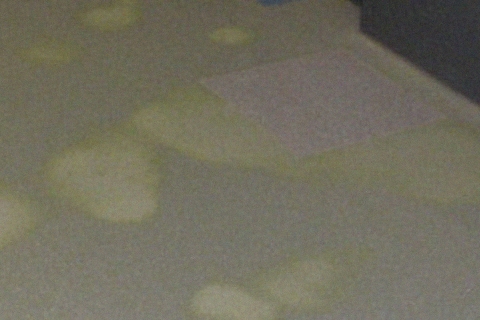From Rupert Pool and the Investigations Team
On three separate occasions in a twelve month period BRE was asked to investigate the appearance of discoloured patches on new sheet vinyl flooring. In all of these the vinyl had been laid in the traditional manner – adhesive-bonded to a smoothing compound (latex) that had been applied to the top of a sand-and-cement screed.
In two occurrences, the screed was new, having been laid as part of new construction works. In the other, the screed was more than forty years old and new flooring had been laid as part of refurbishment works.
Observations
The stains appeared as dark blotches, which varied in size and extent. In one case, the floor coverings of three different manufacturers showed the same type of discolouration.

New construction
BRE’s investigation revealed that the epoxy damp-proof membranes that had been applied to the surfaces of the two new screeds contained localised defects. In one installation they were the result of cracks forming in the screed after the damp-proof membrane (dpm) had been applied. In the other installation they resulted from the incomplete application of the dpm.
In both cases the defects allowed moisture to move upwards from the screed and into the flooring materials. the key factor was that the moisture brought alkalinity with it from the cement – it was the alkalinity that caused the discolouration. This was confirmed in BRE’s labs where samples of the floor coverings were immersed in an alkaline solution.
The small spots next to the cleaners’ cupboard were considered to have been caused by drop of concentrated caustic cleaning products on the bottom of the mop bucket coming into contact with the floor coverings.
Refurbishment works
In the case of the refurbished building, the original screed contained sufficient moisture to allow the alkalinity of the screed to be mobile, despite having been in place for over forty years.
The alkaline moisture affected the floor coverings across whole rooms, but the effects were most pronounced where furniture had pressed the vinyl flooring onto the screed. In this case, an epoxy membrane should have been installed, not to suppress moisture, but to prevent the migration of alkalinity from the screed.

